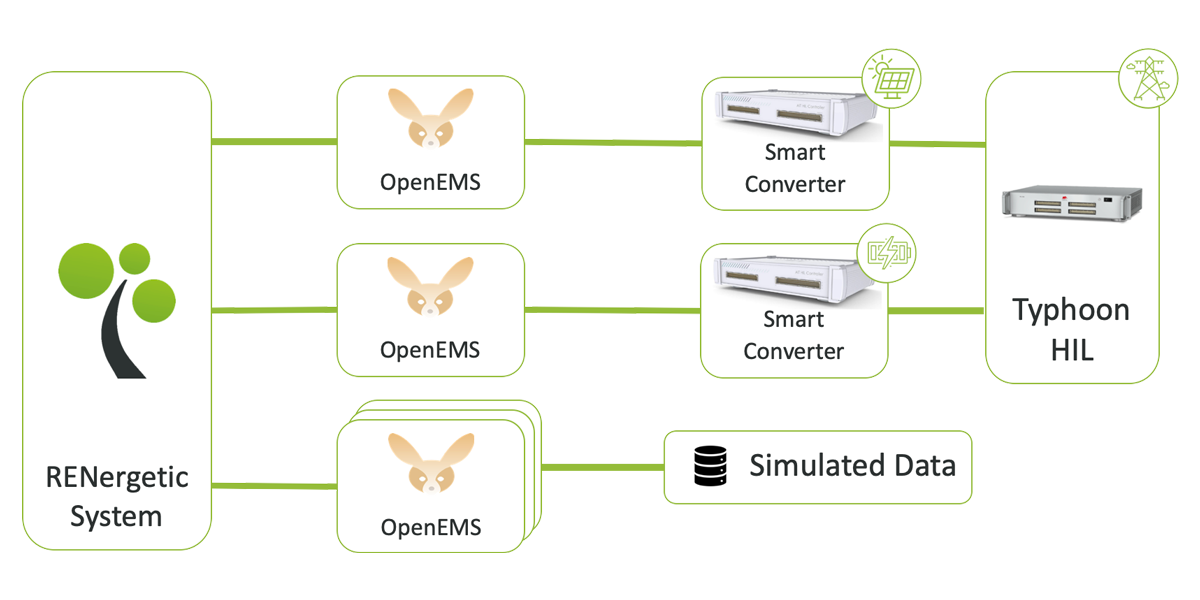A digital twin is a virtual real-time representation of a real-world physical system or process. In the RENergetic system, participating physical assets (prosumers) in an energy island have a digital representation in the cloud-based software solution that depicts their main energy-related characteristics. These digital twins are fed with sensor data from their physical counterparts, e.g. energy consumption behavior, target room thermostat temperature or external measurement data like indoor and outdoor temperature. Since the sensor data is made available in real-time, AI forecasting algorithms benefit from highly monitored and structured big data from the digital twins to train improved artificial models based on historical data and user preferences.
Furthermore, the digital twins provide control actions and recommendations that are reflected to the physical assets via a standardized application programming interface, e.g. modification of the thermostat setting of a room or notification to the community members. Among others, the digital twins support automatic and semi-automatic demand response, where a demand signal is generated by the central brain of the RENergetic software solution (using AI methods). Then, the digital twin, as well as their physical counterpart, adopt their behavior accordingly. Automatic control actions may also include ancillary service scheduling to battery storage systems to support the power grid with frequency regulation. In this use-case, the battery is configured to support frequency control via droop curves by appropriately charging or discharging the battery according to the locally measured power grid frequency, made also available to the digital twin. Thereby, the digital twin in the RENergetic cloud-solution is connected to the physical battery management system via open source software OpenEMS and standardized communication protocols, such as SunSpec.
An exemplary connected digital twin setup is showcased by the virtual energy island laboratory in the project. There, two smart converters that act as a battery storage system and a photovoltaic inverter are physically connected to a high performant power grid emulator. The two smart converters communicate locally with OpenEMS instances via SunSpec over Modbus/TCP to enable their remote control capabilities. The RENergetic cloud-solution is further connected using the Internet of things protocol MQTT. Other digital twins that represent energy management and control assets can be connected to the open source software OpenEMS via the same MQTT interface.
